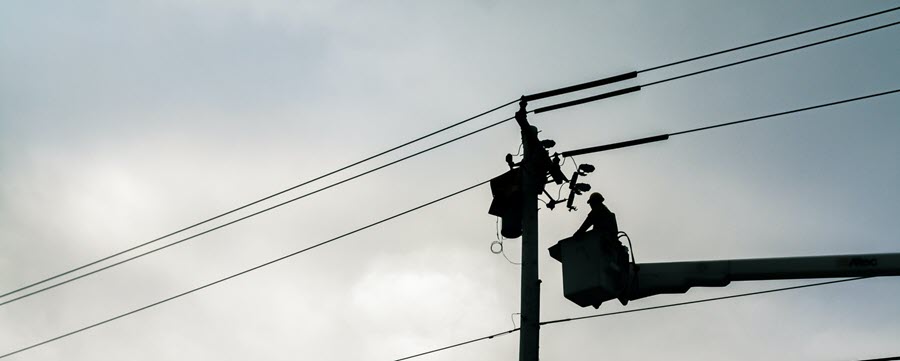
Essential Safety Tips for Utility Workers

Safety is a top priority in the utility industry. Workers face numerous hazards on the job, but they don’t have to risk getting hurt every day. Safety professionals can take steps to create a safer work site and workers can develop good on-the-job habits. These essential tips are a great place to start building a safer work environment.
1. Prioritize Health and Fitness
One of the easiest ways to stay safer on the job is practicing good health and fitness habits. Utility workers do a lot of heavy lifting, pushing, pulling and hauling every day, and that strain can take a toll on the body. The back and joints, in particular, are at high risk of injury from manual labor tasks.
Because of the physical nature of their work, utility workers face a high risk of developing musculoskeletal disorders. A simple preventive step that costs nothing and only takes a few minutes is stretching muscles before beginning work. Stretching and strength-training can help reduce the risk of strains. Various stretching tutorials can be found online to prevent cramps and muscle injuries and even improve flexibility.
It is important to remember that if an injury does occur on the job, including any kind of aching or back pain, getting it checked out by a medical professional promptly is vital. Back injuries can be particularly dangerous, so pay close attention to potential signs of harm.
2. Practice Slip, Trip and Fall Safety
One of the most common causes of injuries for utility and construction workers is slips, trips and falls. Lack of proper fall protection is the most cited OSHA violation. Fall-related injuries impact thousands of workers every year, and most of the time, they can be prevented. Wearing the proper PPE and safety gear on the job is an essential first step.
Stay aware of the site’s surroundings, as well. There may be fall hazards that are difficult to notice at first. Similarly, it is essential to ensure the work area is clean, since things like loose power cables or miscellaneous tools on the ground can pose tripping and slipping dangers.
Additionally, before getting started on a project that might pose a risk of falling, make sure to double-check all protective equipment and any climbing or harness gear to ensure it is in good working order. These steps are crucial for utility workers since they are often alone at work sites.
3. Watch the Weather
The weather can have a significant impact on safety for utility workers. Rain creates severe electrical dangers. Intense winds can also increase electrical risks, as well as the potential for falls.
Winter is arguably the most dangerous season, however. Workers in all outdoor industries, from construction to utilities, prioritize comprehensive preparation for winter weather. This includes safeguarding equipment, preparing the work site and reviewing safety tips. Winter is more dangerous than other seasons because ice and precipitation increase the risks of falling and slipping, as well as the dangers posed by electrical hazards. Cold weather is also hard on the muscles, and prolonged exposure brings health risks.
4. Emphasize Electrical Safety
Among the most common and severe dangers utility workers face are electrical hazards. Being mindful of them is important in any job, but the risks of injuries are amplified for line employees. Remain cautious of common electrical hazards as well as those specific to certain sites.
Make sure to wear safety gear when needed, and pay special attention to things like de-energizing or grounding lines. OSHA electrical guidelines strongly advise against tampering with the pins in cable plugs and utilizing extension cords any more than necessary.
5. Connect With Other Line Workers
Sharing safety tips can be a challenge for utility workers since the field often requires working solo. Make an effort to connect with others in the area. It is a good way to stay informed about what colleagues are doing to stay safe and potentially hear about safety tips for specific sites.
Keeping in touch with site managers and supervisors is important, as well. Make note of any safety concerns or risks on-site throughout the workday, and take the time to report them. Managers should appreciate the notification since it is in their best interest to look into safety issues.
Putting Safety First for Utility Workers
Staying safe on the job is a process, one that requires dedication and good habits every day. Utility workers can prevent accidents and injuries by remembering these tips and adding their own. Putting safety first means professionals can work safer, smarter and stronger.
About the Author:
Evelyn Long is the editor-in-chief of Renovated, a web magazine for real estate and construction professionals.

